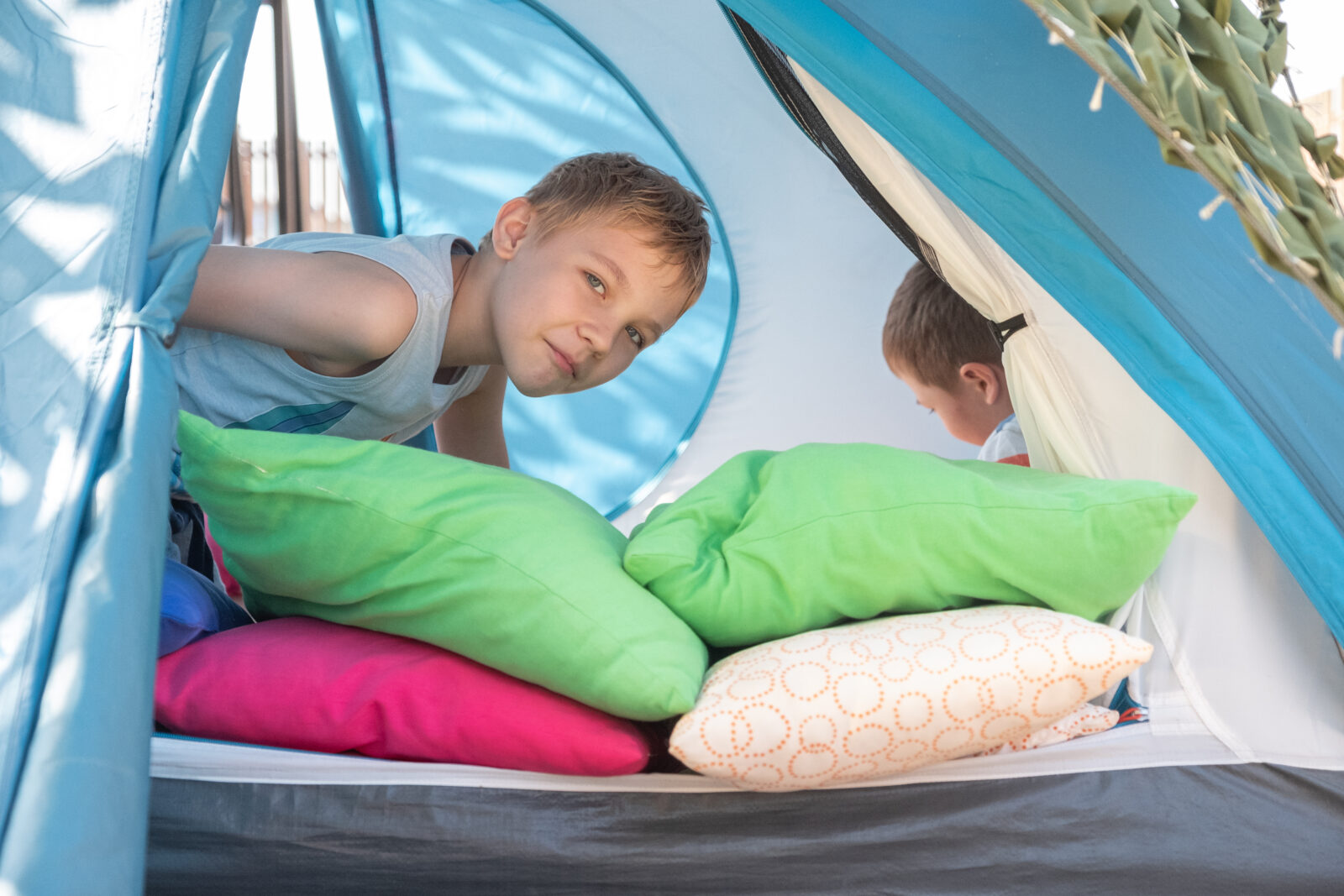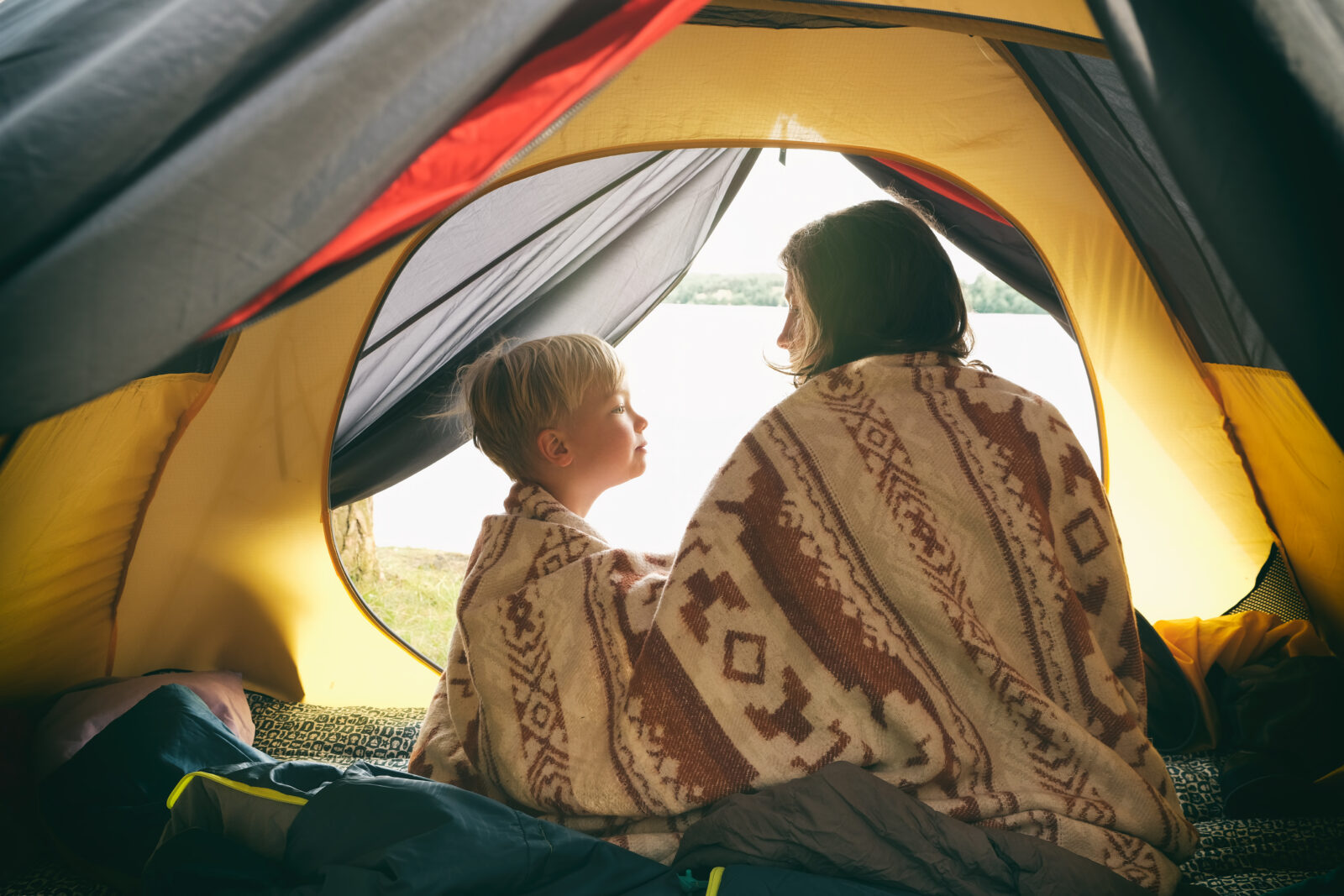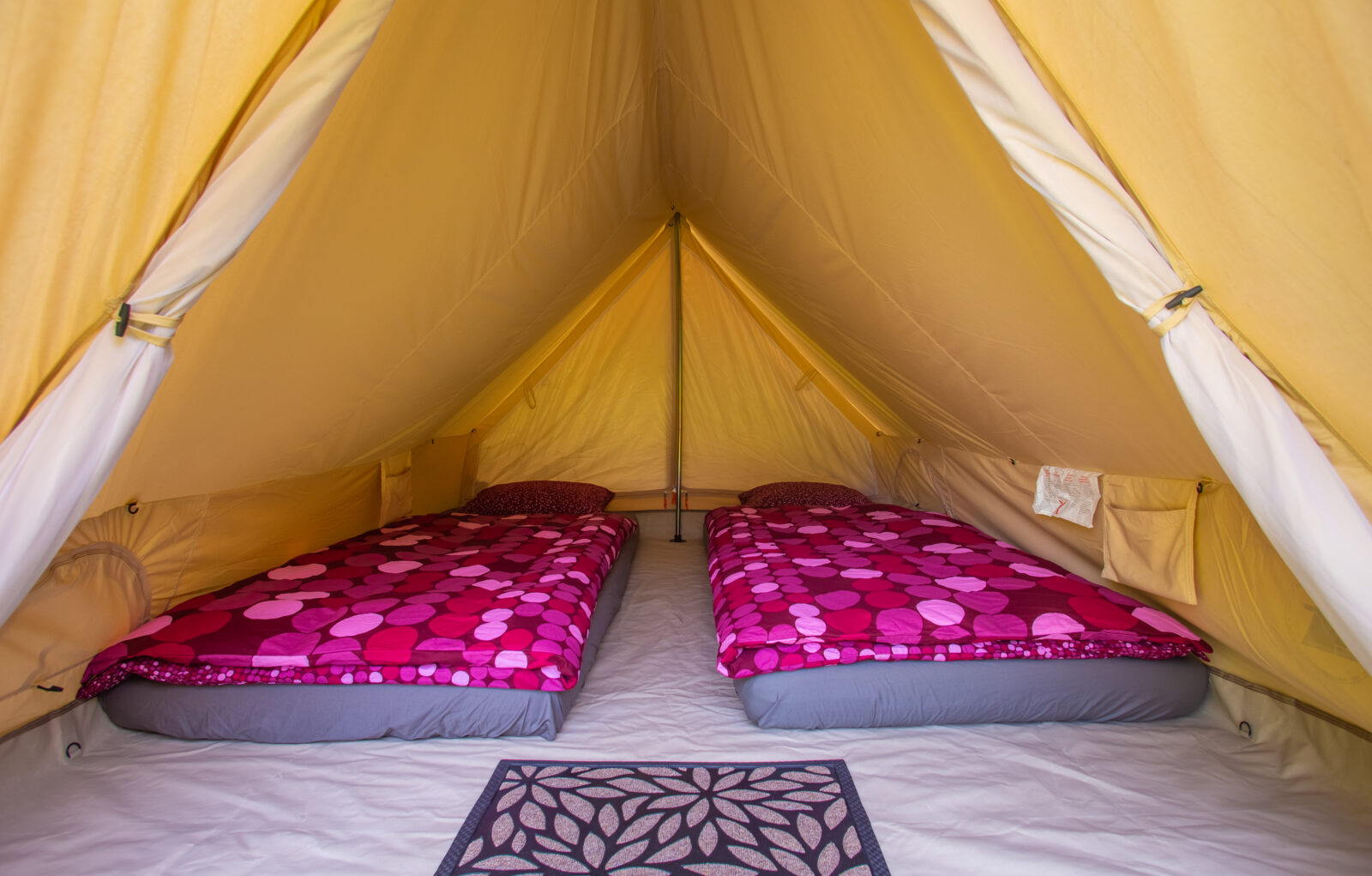Do you struggle to get a good night’s sleep while camping?
You’re not alone. For many people, catching some Zzzs while under the stars is easier said than done.
The good news? It doesn’t have to be this way. While your bed at home might be super comfy, there’s no reason that you can’t sleep just as well in the great outdoors.
To help you out, we’ve created this list of 9 need-to-know tips for getting a good night’s sleep while camping. That way, you can feel rested and refreshed for your next day of adventure in the mountains.
1. Invest in a quality sleeping pad
If there’s one piece of gear that has an outsized ability to impact your sleep quality while camping, it’s your sleeping pad. Indeed, whether you’re car camping in Hot Springs National Park or backpacking in Yosemite, having the right sleeping pad on hand can make a world of difference each night.
For the best night’s sleep while backpacking, consider investing in an inflatable sleeping pad. These pads provide substantially more comfort at night than you can ever expect from a foam model, even if they do come at an extra cost.
Alternatively, for car camping adventures, an air mattress or even a cot might be a worthy investment. These two options help provide even more padding from the hard ground, ensuring that you get the best possible sleep at night.
Read More : What Does the Sleeping Pad R-Value Mean?
2. Ensure you have the right sleeping bag
In addition to a quality sleeping pad, you’ll also want to ensure that you have the right sleeping bag with you while camping for the conditions you face.
However, there’s no one sleeping bag that’s right for all outdoor adventures. Rather, it’s important that you find one that’s rated for the coldest temperatures you expect to deal with during your travels.
For example, someone on a winter backpacking trip in Glacier National Park will likely need a winter sleeping bag that’s rated to 0ºF (-17ºC) or even colder. Meanwhile, summertime campers in Acadia might need a summer sleeping bag that’s rated to 30ºF (-1ºC).
So, what’s important is that you get the right bag to keep you warm throughout your adventures.
Read More : Sleeping Bag Temperature Ratings Explained
3. Don’t forget your pillow
When you’re trying to rough it in the great outdoors, a pillow might seem like an unnecessary luxury. But, if you want to help ensure that you get a good night’s sleep while camping, you’d best not forget your camping pillow.
In fact, even a small inflatable pillow can have a major positive impact on your camping experience.
That being said, you could always just put a bunch of spare hiking clothes into a stuff sack and use that as a pillow when doing an ultralight trip to a remote place like Olympic National Park.
But, if you’re serious about your comfort at night, there’s no substitute for a proper camping pillow.
Read More : How to Get A Good Night Sleep while Camping
4. Make hydration a pre-dinner priority
Proper hydration is essential for your well-being, both in the mountains and during your day-to-day life. However, hydration also leads to frequent bathroom breaks, which are a sure-fire way to ensure that your sleep quality decreases drastically throughout the night.
To combat this problem of having to get out of your warm sleeping bag multiple times each night, you’ll need to be strategic with your on-trail hydration.
Our advice?
Making hydration a priority before you have dinner. Ensure that you drink enough water from your water bottles throughout the day while you’re hiking and adventuring. Then, at dinner, you can drink water and other beverages to your heart’s content.
But, after dinner, lay off the drinks a little bit. Instead of sipping on an endless stream of hot cocoa at night, consider minimizing your post-dinner fluid intake to just 1 or 2 drinks. You’ll thank us later when you can finally get through a night of camping without having to get out of bed.
Read More : How Much Water Should You Bring to Camping?
5. Start a bedtime camping routine
We know what you’re thinking: Bedtime routines are for kids, so I don’t need one… right?
Well, while a bedtime routine might seem like something that your parents forced upon you as a kid, sticking to a nightly routine while camping can help prep your body for bedtime. Indeed, providing a bit of structure to your day by accomplishing certain tasks in a given order can help your body transition more quickly into a blissful slumber at night.
Thankfully, establishing one of these routines is fairly simple.
The next time you’re camping somewhere cool, like Yellowstone National Park, make a list of all the things you need to do before bed, like putting out your campfire, brushing your teeth, locking your food in a bear-proof cooler, and changing into your pajamas. Then, turn these steps into a routine that you follow each night without fail.
When you wake up the next morning feeling refreshed, you’ll be glad that you had a bedtime camping routine.
6. Pack earplugs on every trip
Regardless of whether or not you’re a heavy sleeper, earplugs should be considered a standard part of any camper’s gear list.
That’s because, in addition to any snoring tentmates you might have in your 4 person tent, the great outdoors is a noisy place. Indeed, from howling winds to over-active nocturnal woodland creatures, there are a whole lot of things that can make noise while you’re trying to snooze at night.
So, do yourself a favor and pack earplugs on your next trip to Death Valley (or anywhere else, for that matter). In fact, pack a few extra pairs if you can – your fellow tentmates will be forever grateful if you lend them a pair of earplugs, too.
7. Bug-proof your sleeping area
If there’s one thing that we can all pretty much agree on while camping, it’s that bugs are no fun. Plus, when it comes to getting a good night’s sleep during an outdoor adventure, those annoying bugs can be the one thing standing in the way of you catching some Zzzs.
To help ensure that bugs don’t put a damper on your camping trip, you’ll want to make sure that you bug-proof your sleeping area.
In a 2 person tent, doing so might be as simple as zipping up the tent at night. Meanwhile, folks that prefer to stay in a hammock might need to invest in a hammock bug net to ensure that buzzing mosquitoes don’t keep you awake until the wee hours of the morning.
8. Search for a flat campsite
Fact: Constantly sliding downhill on your sleeping pad at night while camping is not a great way to get a good night’s sleep.
Indeed, sleeping on an angle of any sort is no way to ensure that you wake up feeling refreshed the next morning. Therefore, finding a flat campsite while you’re out and about in Shenandoah or Great Smoky Mountains National Park is of the utmost importance.
That being said, finding a flat campsite isn’t always easy. So, if you’re having difficulty locating a suitable suite, we’d recommend physically testing out various options before you pitch a tent.
When you arrive at a potential location, lie down on the ground where you think you might set up home for the night. If you can feel yourself sliding downhill or if you can feel all the blood rushing to your head, it might be time to find a different location. If not, you’ll likely be okay for the night.
Read More : 11 Tips and Tricks to Pick the Perfect Campsite
9. Get in enough activity during the day
Last but not least, if you want to increase your chances of getting a good night’s sleep while camping, you have to make sure that you get in enough activity during the day.
While a rest day here and there is great from a morale and injury prevention point of view, taking too many rest days will simply lead to restlessness at night. The reality is that there’s no better method of preparing your body to sleep well at night than to be as active as possible during the day.
That way, you’ll fall asleep quickly as soon as your head hits the pillow at night.
Gaby Pilson
Gaby is a professional mountain guide with a master’s degree in outdoor education. She works primarily in the polar regions as an expedition guide, though she can be found hiking, climbing, skiing, sailing, or paddling in some of the world’s most amazing places when not at work.


